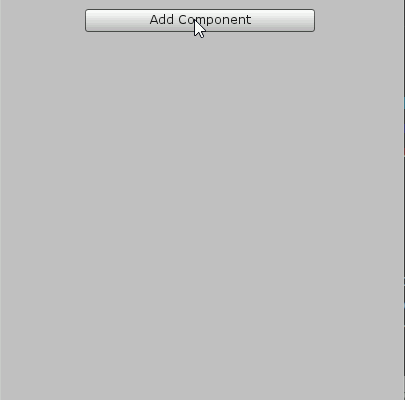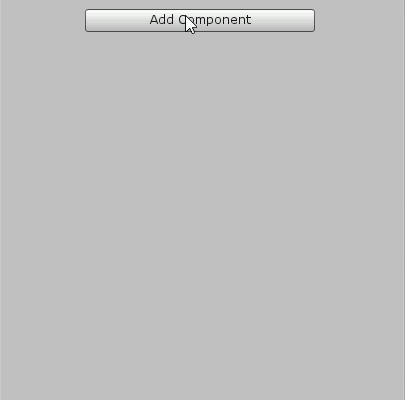How To Add Background Music To Unity
Unity'south default sound capabilities have never been a detail strong betoken. Some much needed functionality has been added over its lifespan, like sound mixers, sends, and insert furnishings, but it's however extremely express compared to the feature sets found in widely used audio middleware and even other game engines.
In this post, I'g going to talk about 3 different potential approaches of gradually increasing complexity for looping music with native Unity audio. Hopefully, in that location will exist something useful here for a variety of feel levels.
Outset nosotros'll encompass use Unity's default loop functionality. Second, nosotros'll use a chip of audio editing and AudioClip PlayScheduled() to create a seamless loop. Lastly, we'll calculate a loop point given the beats per infinitesimal (BPM), beats per measure out (Time Signature), and the full number of measures in the rail and create a simple custom looping system, again using PlayScheduled().
Earlier starting, it should be noted the mp3 format is ill-suited for this awarding for technical reasons across the scope of this post and should exist avoided. Ogg and Wav are good options that handle seamless looping well in Unity.
1. Default Loop
This is the simplest selection, requiring no scripting at all, only it's too the most express. For music that with no reverb or tail to speak of or music that doesn't need to restart exactly on measure, this tin be serviceable. A quick fade at the end of the last bar can work for less ideal music tracks, but it will upshot in an obvious and unnatural loop point.
Create a new object in your scene, or use one that already exists. Whatever is advisable.
Add together an AudioSource component to it and set the AudioClip to your music file, either from the carte to the right of the field or by dragging and dropping information technology from the project browser.

Make certain that "Play On Awake" and "Loop" are enabled. Your music will play when you lot outset the scene and loop at the end of the audio file.
2. Manual Tail/Release Overlap
This method requires some work outside of Unity with an audio editor or Digital Audio Workstation (DAW). Here we'll still use Unity's default looping functionality, afterwards playing and introductory variation of the looped track.
Earlier doing annihilation in Unity yous demand 2 separate versions of the music track in question, one with the tail cutting at the exact stop time of the last bar/measure out, and another with that tail transposed to the showtime of the track, so that information technology overlaps with the start.

Ensure that the start and terminate of these tracks are at a naught crossing, to avoid any discontinuities (audible pops) during playback. This can be accomplished with extremely short fades at the start and end points. This 2d track will transition seamlessly from the introductory track and loop seamlessly as well.
Add together an AudioSource to an object equally in the previous department and set the second edit of the runway (with the tail overlapped with the start) equally the default AudioClip. "Play on Commencement" should Non be enabled.
This is where a scrap of scripting is required. Create a C# script and add it to the aforementioned game object as your AudioSource.

Open up it in your IDE of choice. This will just crave a few lines of code. First, declare two public variables: an AudioSource and an AudioClip
public AudioSource musicSource; public AudioClip musicStart;
Salvage this and switch back to the Unity editor. In that location will exist two new fields for the C# Script component in the Inspector: "Music Source" and "Music Starting time."
Click and elevate the AudioSource you added to your game object before into the "Music Source" field on your script. Do the same with "Music Start," using the intro edit of the prune (without a tail at the offset or end).

This is where the code that makes dissonance comes in.
void Start () { musicSource.PlayOneShot(musicStart); musicSource.PlayScheduled(AudioSettings.dspTime + musicStart.length); } When the scene Starts, the first clip will play in one case and the 2nd clip will be scheduled to play equally soon every bit the showtime has ended. This kickoff time is determined simply past adding the length in seconds of the first clip to dspTime (the electric current time of the audio system in seconds, based on the actual number of samples the audio system processes).
From that point, the runway will loop normally with Unity's default loop functionality.
3. Computing the Loop Point and Looping Manually
The last approach requires more scripting piece of work, and some actress information most the music itself, but does not require any specific editing of the sound file. We'll exist creating a simple custom looping solution using two AudioSources and AudioSource.PlayScheduled() that calculates the end of the final bar or measure based on some data entered in the Inspector and uses that to determine the loop interval.
Add two AudioSources to your game object and ready the default AudioClip for both to the music rails yous're going to loop. This will allow each echo to overlap with the tail of the previous one as it plays out.
Add together a new script to your game object and open it on your IDE. Kickoff, we demand some public variables that nosotros can fix in the inspector: an array of AudioSources and three integer values which correlate to simple backdrop of the music composition itself.
public AudioSource[] musicSources; public int musicBPM, timeSignature, barsLength;
In the inspector, set the Size of the Music Sources array to 2 and drag the two AudioSources y'all've created to the Element 0 and Element one fields.
And then enter a few music properties. Music BPM is the tempo of the music rail in Beats Per Minute (BPM). Time Signature is the number of beats per bar/mensurate. and Bars Length is the number of confined/measures in the track. You lot demand to know these values for this calculation to piece of work.

Next, nosotros need some private variables for some values we will be calculating in the script itself.
private bladder loopPointMinutes, loopPointSeconds; private double fourth dimension; private int nextSource;
The loopPoint values volition be used to store the loop interval once it has been calculated. Time will be the value of dspTime at the start of the scene and be incremented by loopPointSeconds for each PlayScheduled() fourth dimension. And nextSource will exist used to proceed track of which AudioSource needs to be be scheduled adjacent.
Now, in the Start() method nosotros need the script to calculate the loop interval, play the first AudioSource, and initialize the fourth dimension and nextSource values.
void Start () { loopPointMinutes = (barsLength * timeSignature) / musicBPM; loopPointSeconds = loopPointMinutes * sixty; time = AudioSettings.dspTime; musicSources[0].Play(); nextSource = ane; } The custom loop functionality itself is defined in the Update() method, which is called every frame.
void Update () { if (!musicSources[nextSource].isPlaying) { fourth dimension = time + loopPointSeconds; musicSources[nextSource].PlayScheduled(time); nextSource = 1 - nextSource; //Switch to other AudioSource } } Offset, we check if the nextSource is notwithstanding playing. And so, if it is NOT:
- Increment the time by the loop interval (loopPointSeconds).
- Schedule the nextSource AudioSource to play at that time.
- Toggle the value of nextSource (from one to 0 or from 0 to 1), and then the script will cheque and schedule the other audio source.
And that's information technology. The music track should begin playing at the start of the scene and continue to repeat at the loop point until the object is destroyed.
How To Add Background Music To Unity,
Source: https://andrewmushel.com/articles/looping-music-in-unity/
Posted by: reynoldsfoure1965.blogspot.com


0 Response to "How To Add Background Music To Unity"
Post a Comment